True to Life
(Weschler and Hockney 2008)
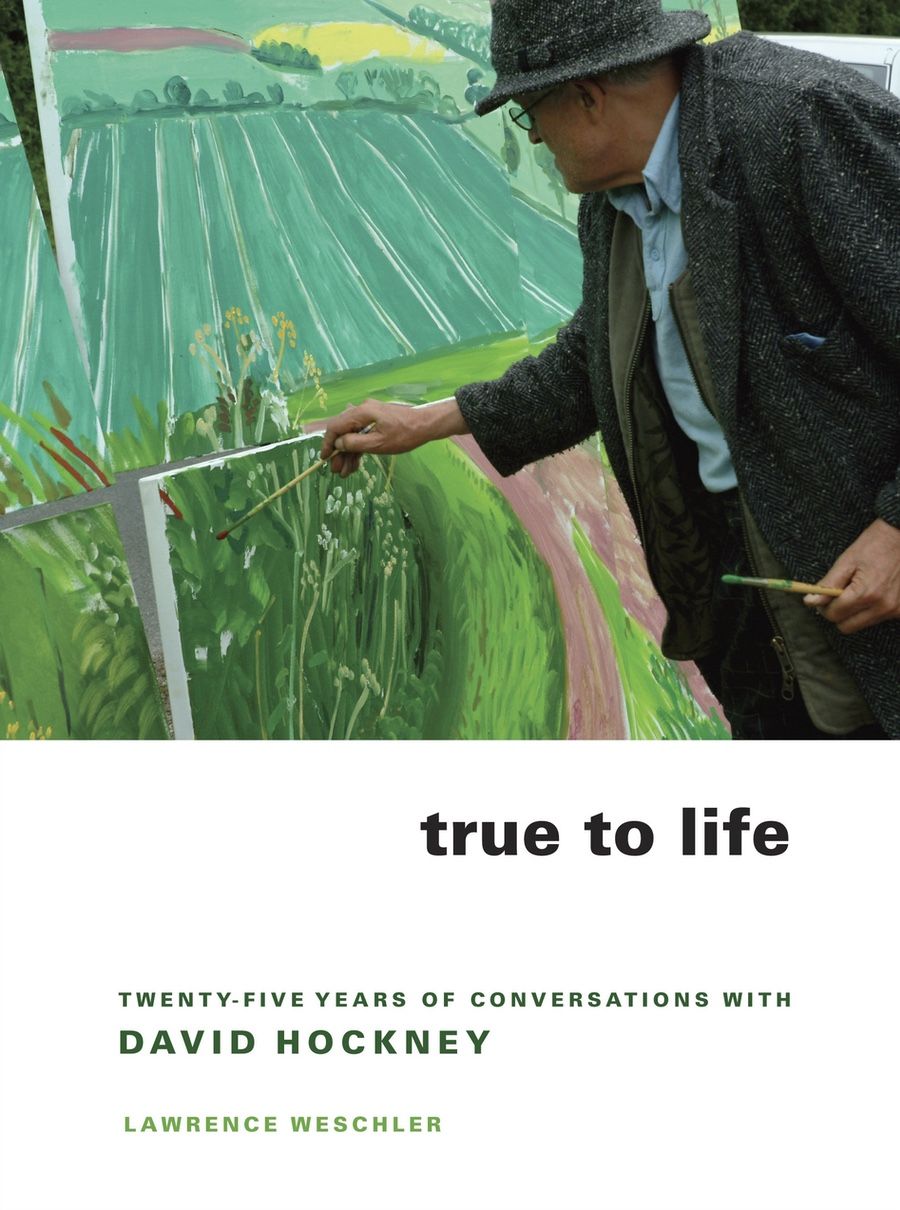
2008 cover from UC Press
True to Life: Twenty Five Years of Conversation with David Hockney is a biography written about the English painter and photographer David Hockney by Lawrence Weschler, a former staff writer at The New Yorker.
This book is a companion volume to Lawrence Weschler’s Seeing Is Forgetting the Name of the Thing One Sees: Over Thirty Years of Conversations with Robert Irwin. I find this book to be the more uplifting and joyful of the pair. Hockney’s outlook on life is characterized by a love of nature and human perception, while Irwin’s is more distant and analytical.
Photographing time

David Hockney - My House (1982)
…the reason you can’t look at a photograph for a long time is because there’s virtually no time in it - the imbalance between the two experiences, the first and second lookings, is too extreme.
(Weschler and Hockney 2008, 7)
Hockney was drawn to photo collage because he could portray time and space as an interconnected collection of moments. With a single photograph, the mechanics and timing of pulling the shutter felt off-balance with displaying it in a gallery for a viewer.

David Hockney - The Scrabble Game (1983)
I mean photography is all right if you don’t mind looking at the world from the point of view of a paralyzed cyclops—for a split second. But that’s not what it’s like to live in the world or to convey the experience of living in the world.
(Weschler and Hockney 2008, 6)
In Hockney’s drawings and paintings, time is layered onto the image as a series of edits and refinements by the artist’s act of observation and creation. Time and space are a primary question across much of Hockney’s work.
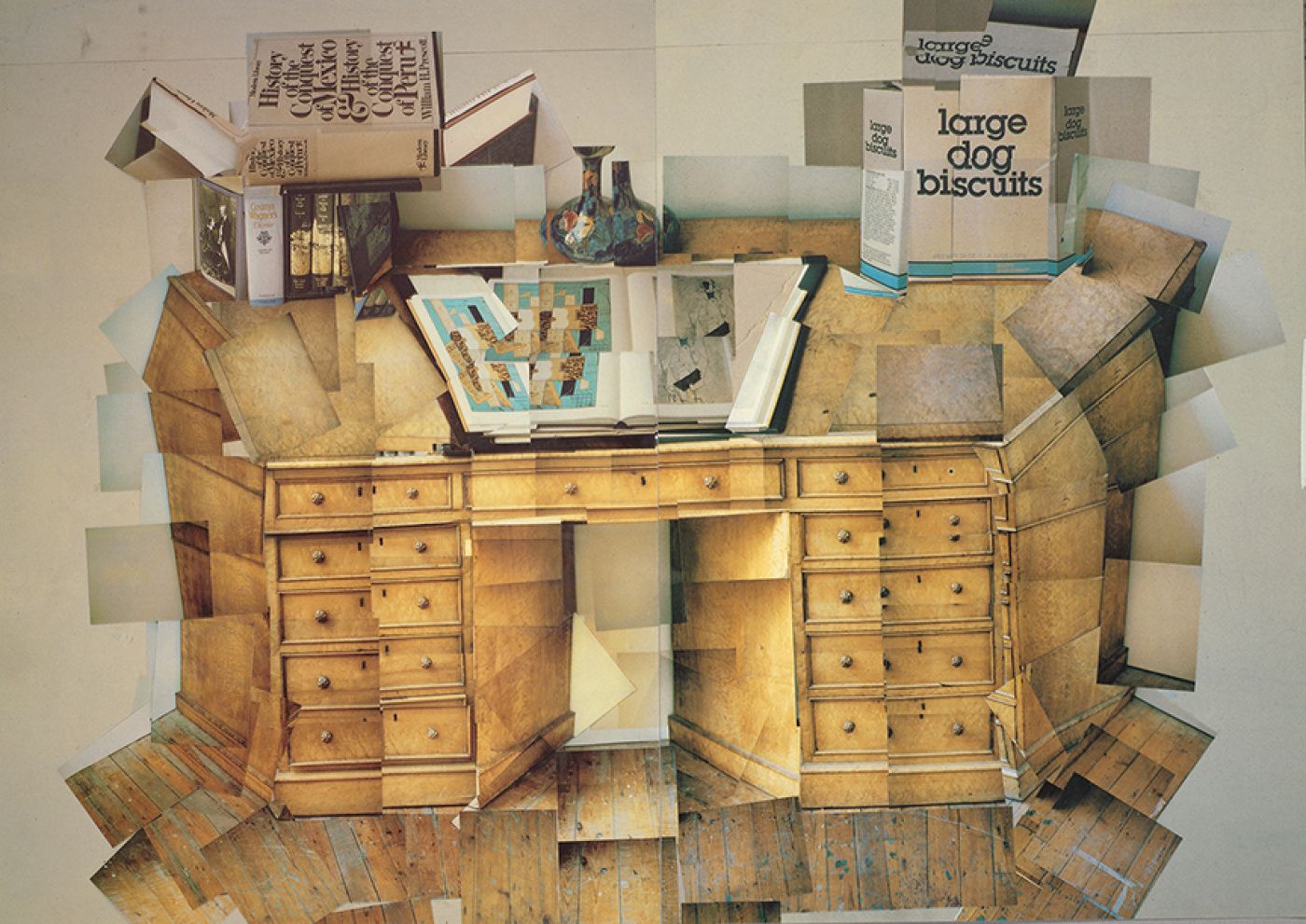
David Hockney - The Desk (1984)
The camera, although people think it sees everything in front of it, cannot see the main thing we get excited about in front of us, which is space. The camera cannot see it. Only human beings maybe, or anyway only living beings, can see space.
(Weschler and Hockney 2008, 53)
Painting space
I am painting with my whole body. And the painting itself is addressing you in your entire body: it is big enough to be doing so. You can feel it. And that’s the point: out there in the world but here as well, space is a feeling.
(Weschler and Hockney 2008, 212)

Jean Pierre Goncalves (2006)
In order to capture or convey anything about a space accurately, Hockney realizes he must trek out with canvases and oils into his landscapes to achieve a deep meditative awareness of the human experiences of spatial perception.
… in order to convey space and spaciousness, rather than mere surface…you have to be out there, in person, en plein air, facing out into all that space.
(Weschler and Hockney 2008, 210)

David Hockney - A Visit with Christopher and Don (1984)
the cubists performed an exquisite critique of photography; they showed that there were certain aspects of looking — basically the human reality of perception — that photography couldn’t convey, and that you still needed the painter’s hand or eye to convey them.
(Weschler and Hockney 2008, 50)
There is a reciprocal relationship between the artist and viewer’s act of observation with the artwork. Hockney’s work examines this relationship against the backdrop of space and time.
A shift in Hockney’s perception about his art occurred when he started using the camera as a tool for a different job than what it was made for - drawing instead of capturing. This technique resolved Hockney’s tension with the photographic medium’s inherent lack of time.
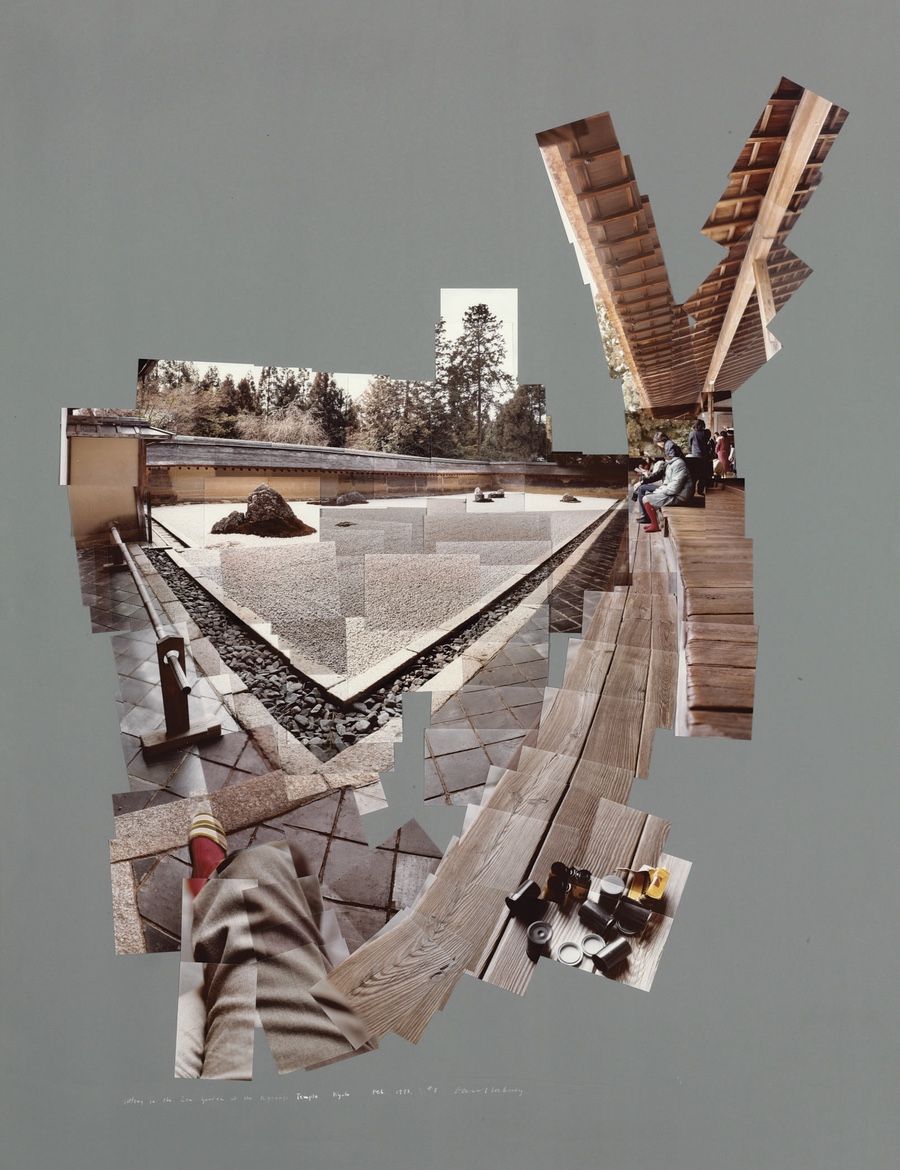
David Hockney - Sitting in the Zen Garden at the Ryōanji Temple Feb. 19, 1983 (1983)
The camera is an extraordinary drawing tool. It’s as if I, like most ordinary photographers, had previously been taking part in some long-established culture in which pencils were used only for making dots—there’s an obvious sense of liberation that comes when you realize you can make lines!
(Weschler and Hockney 2008, 14)
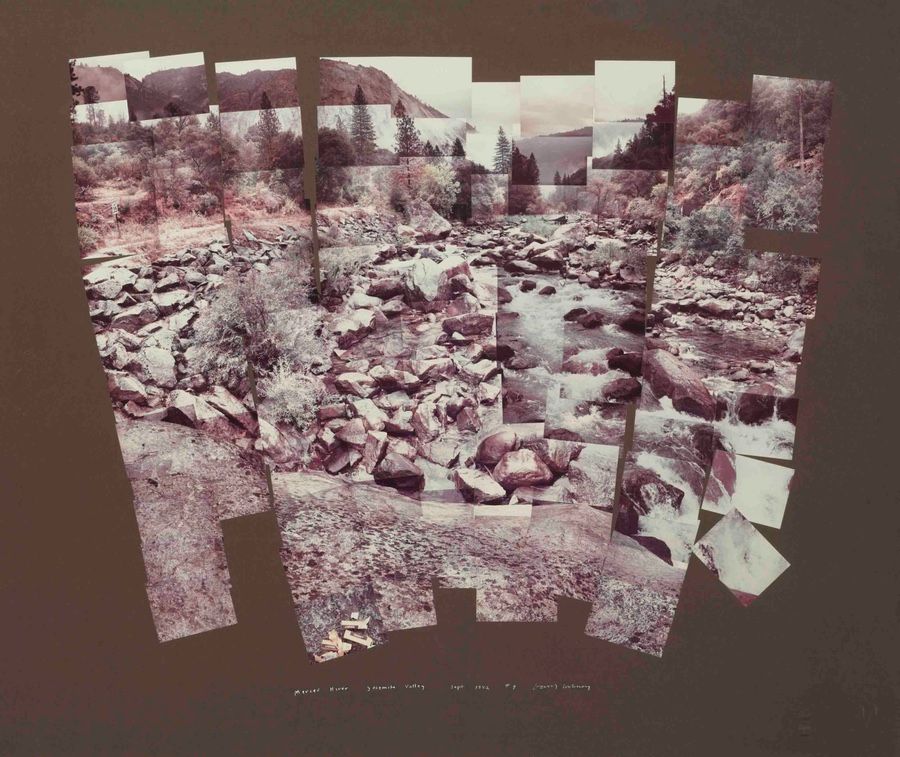
David Hockney - Merced River, Yosemite Valley (1982)
Art takes two
There are two observations at play in the interaction between artist, artwork, and observer. The first is the artist’s observation of a subject or idea. This observation transmutes attention into an object. The second is the viewer’s observation of the art. This observation transmutes the object back into attention.
For something to be seen, it has to be looked at by somebody, and any true and real depiction should be an account of the experience of that looking.
(Weschler and Hockney 2008, 66)

David Hockney - Woldgate Woods II, 16 - 17 May (2006)
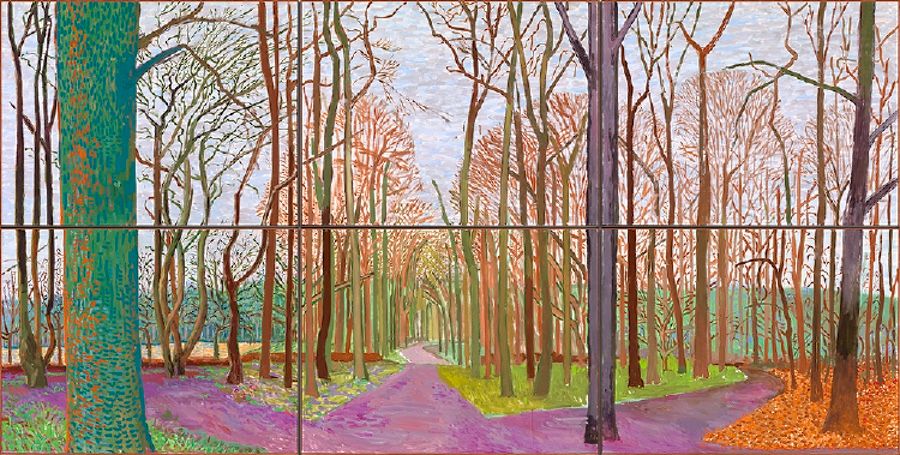
David Hockney - Woldgate Woods, 30 March — 21 April (2006)
Art as research
All of this work is undertaken in a spirit of research. I’m not so much interested in the mere objects I’m creating as in where they’re taking me, and all the work in all the different media is part of that inquiry and part of that search.
(Weschler and Hockney 2008, 61)
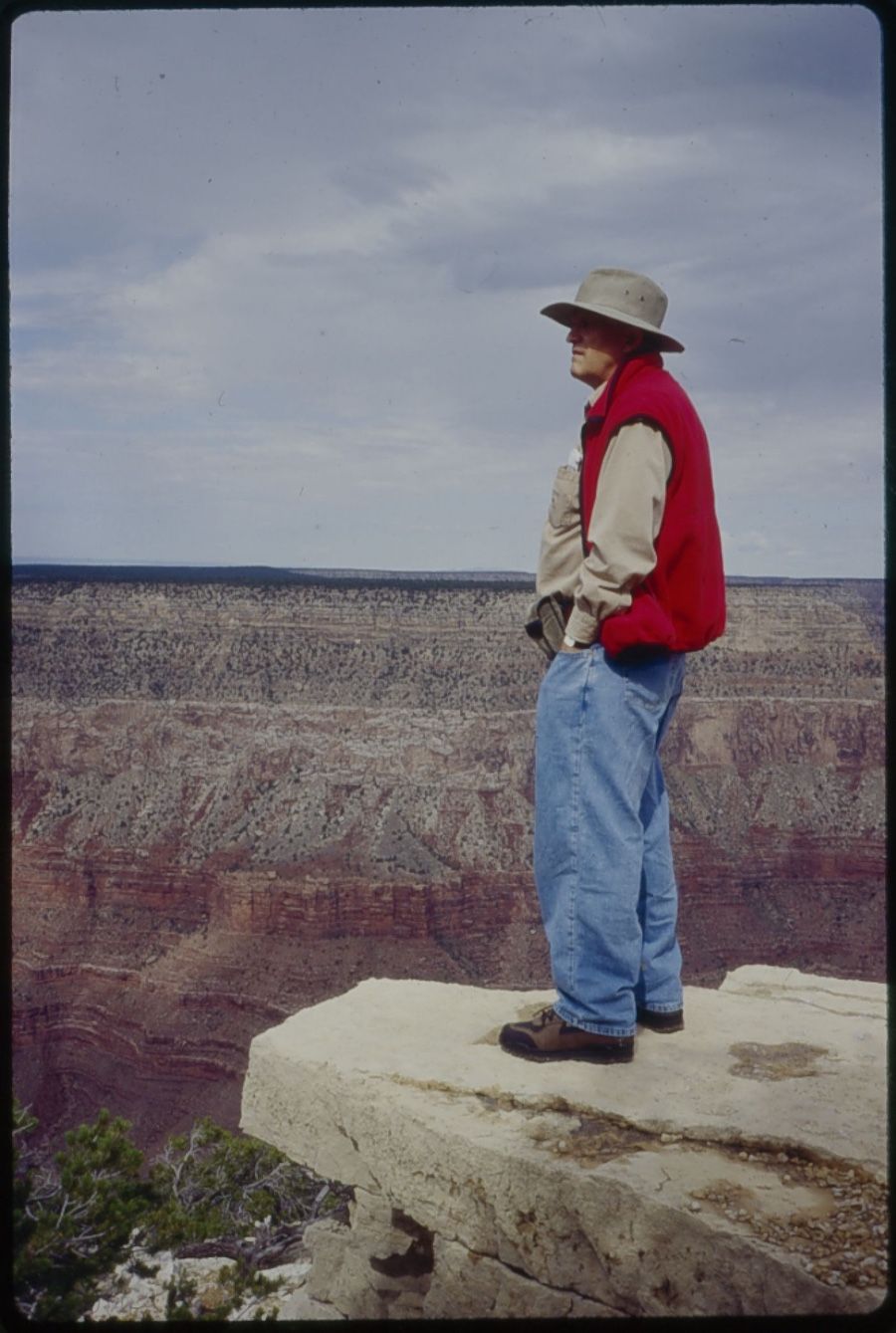
Richard Schmidt (1998)

David Hockney - The Grand Canyon Looking North II (1986)

David Hockney - A Bigger Grand Canyon (1998)
Weschler, Lawrence, and David Hockney. 2008. True to Life: Twenty-Five Years of Conversations with David Hockney. Berkeley, CA: University of California Press.
Date
June 16, 2020












